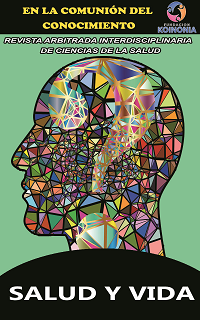Microbial contamination during dental care due to aerosol and splash production
DOI:
https://doi.org/10.35381/s.v.v7i13.2406Keywords:
Dental offices, control agents for microorganisms, environmental pollutants. (Source, DeCS).Abstract
Objective: To analyze microbial contamination during dental care due to the production of aerosols and splashes. Methodology: Documentary, bibliographic type. The search was carried out through the Pubmed and SCOPUS databases. Considering the guidelines of the PRISMA declaration, a total of 221 articles were obtained. Subsequently, the exclusion and inclusion criteria were applied, obtaining a total of 25 articles. Results: The microbial load present in the dental environment has been analyzed quantitatively through Colony Forming Units (CFU) in different spaces and surfaces of dental clinics. In conclusion: Microbiological contamination associated with the generation of aerosols is a problem that is experienced in the daily dental practice, mainly related to procedures associated with equipment such as high-speed handpieces, ultrasonic equipment and triple syringe.
Downloads
References
Zemouri C, De Soet H, Crielaard W, Laheij A. A scoping review on bio-Aerosols in healthcare & the dental environment. PLoS One. 2017;12(5):1–25
Jayaweera M, Perera H, Gunawardana B, Manatunge J. Transmission of COVID-19 virus by droplets and aerosols: A critical review on the unresolved dichotomy. Environ Res [Internet]. 2020 [citado 14 nov 2022];188:109819. Available from: https://doi.org/10.1016/j.envres.2020.109819
Samaranayake LP, Fakhruddin KS, Ngo HC, Chang JWW, Panduwawala C. The effectiveness and efficacy of respiratory protective equipment (RPE) in dentistry and other health care settings: a systematic review. Acta Odontol Scand [Internet]. 2020[citado 8 nov 2022];78(8):626–39. Available from: https://doi.org/10.1080/00016357.2020.1810769
Suprono MS, Won J, Savignano R, Zhong Z, Ahmed A, Roque-Torres G, et al. A clinical investigation of dental evacuation systems in reducing aerosols. J Am Dent Assoc [Internet]. 2021 [citado 7 oct 2022];152(6):455–62. Available from: https://doi.org/10.1016/j.adaj.2021.02.013
Amato A, Caggiano M, Amato M, Moccia G, Capunzo M, De Caro F. Infection control in dental practice during the covid-19 pandemic. Int J Environ Res Public Health. 2020;17(13):1–12.
Rexhepi I, Mangifesta R, Santilli M, Guri S, Carlo P Di, Addazio GD, et al. Effects of Natural Ventilation and Saliva Standard Ejectors during the COVID-19 Pandemic : A Quantitative Analysis of Aerosol Produced during Dental Procedures. Int J Environ Res Public Health. 2021;18(7472).
Jain M MA, Mathur A, Mukhi P, Ahire M PC. Qualitative and quantitative analysis of bacterial aerosols in dental clinical settings: Risk exposure towards dentist, auxiliary staff, and patients. J Fam Med Prim Care [Internet]. 2020[citado 12 nov 2022];9(2):1003–8. Available from: https://n9.cl/bwxs4
Garcia LDV. Identificación de causas de crecimiento bacteriano en la verificación de los ciclos de esterilización de consultorios dentales en San Luis Potosí. [Identification of causes of bacterial growth in the verification of sterilization cycles of dental offices in San Luis Potosi].Universidad Autónoma de San Luis Potosí;[Internet] 2020.[citado 9 nov 2022]. Available from: https://n9.cl/qgnu2
Rivera, C. Los Aerosoles Dentales a Propósito de la Pandemia por COVID-19. Int. J. Odontostomat. [Internet]. 2020 [citado nov 11 2022]; 14(4);519-522. Disponible en: http://dx.doi.org/10.4067/S0718-381X2020000400519.
Baudet A, Guillaso M, Grimmer L, Regad M, Florentin A. Microbiological contamination of the office environment in dental and medical practice. Antibiotics. 2021;10(11).
Orellana ISA, Rengifo JC, Gómez MC, Robles CM, Villalva RA, Ortiz AD, et al. Microbiological characteristics of patients with positive urocultives at the hospital universitario del rio, ecuador. Arch Venez Farmacol y Ter. 2021;40(5):506–9.
Fernandes LM, Zapata RO, Rubira-Bullen IRF, Capelozza AL. Microbiologic cross-contamination and infection control in intraoral conventional and digital radiology. Rev Gaúcha Odontol. 2013;61:609–14.
Christian RM. Riesgo ergonómico en el personal de cirugía de diferentes instituciones hospitalarias de la ciudad de Santiago de Cali, 2018.[ Ergonomic risk in surgical personnel of different hospital institutions in the city of Santiago de Cali, 2018] Arch Venez Farmacol y Ter [Internet]. 2019[ citado 13 nov 2022];38(4);509–13. Available from: https://n9.cl/d43js
Calderón Alemán D, Tello Larriva M, Montesinos Rivera M AGG. Estudio Descriptivo : Bioseguridad En Instituciones Formadoras En Salud.[ Descriptive Study : Biosecurity in Health]. Revista OACTIVA UC Cuenca . 2(2),17-22.Disponible en: https://n9.cl/xago3
Nisha S, Bettahalli A, Kumar S, Shashikumar P, Musharraf N KM. Efficacy of Preprocedural Boric Acid Mouthrinse in Reducing Viable Bacteria in Dental Aerosols Produced during Ultrasonic Scaling. Contemp Clin Dent. 2021;12(3):282–8.
Published
How to Cite
Issue
Section
License
Copyright (c) 2023 Mayra Vanessa Montesinos-Rivera, Karen Lisseth Andrade-Ordóñez, Piedad Cecilia Redrován-Reyes, Nube Gabriela Zaruma-Zhagñay

This work is licensed under a Creative Commons Attribution-NonCommercial-ShareAlike 4.0 International License.
CC BY-NC-SA : Esta licencia permite a los reutilizadores distribuir, remezclar, adaptar y construir sobre el material en cualquier medio o formato solo con fines no comerciales, y solo siempre y cuando se dé la atribución al creador. Si remezcla, adapta o construye sobre el material, debe licenciar el material modificado bajo términos idénticos.
OAI-PMH: https://fundacionkoinonia.com.ve/ojs/index.php/saludyvida/oai.









